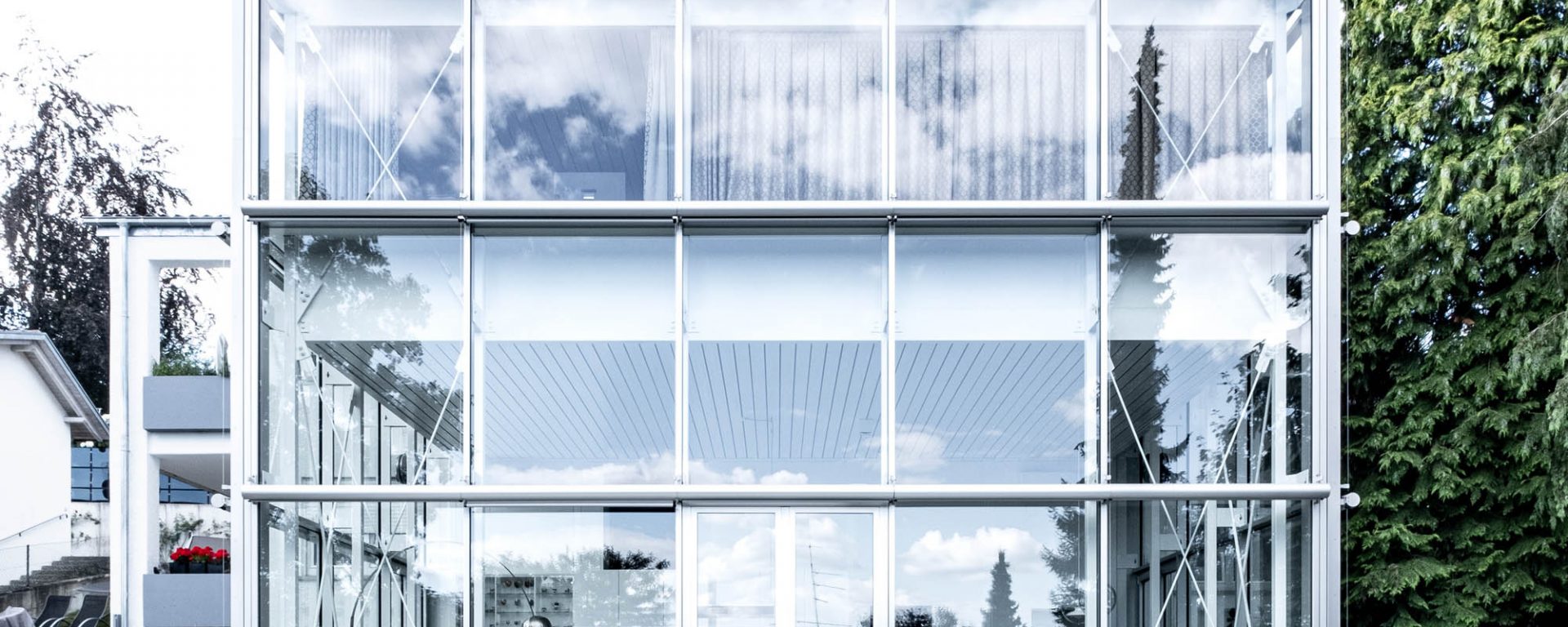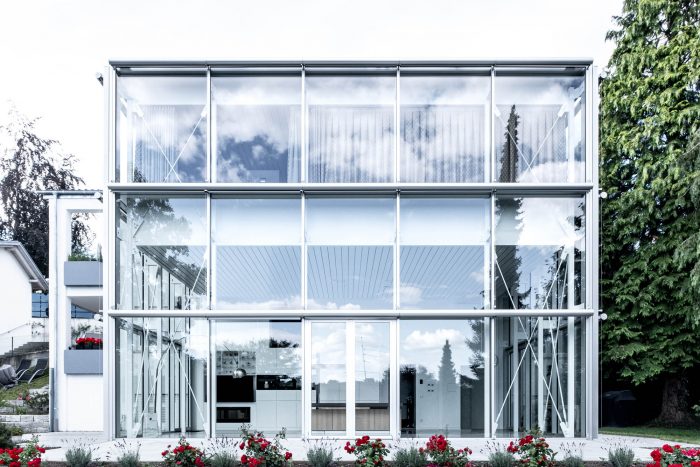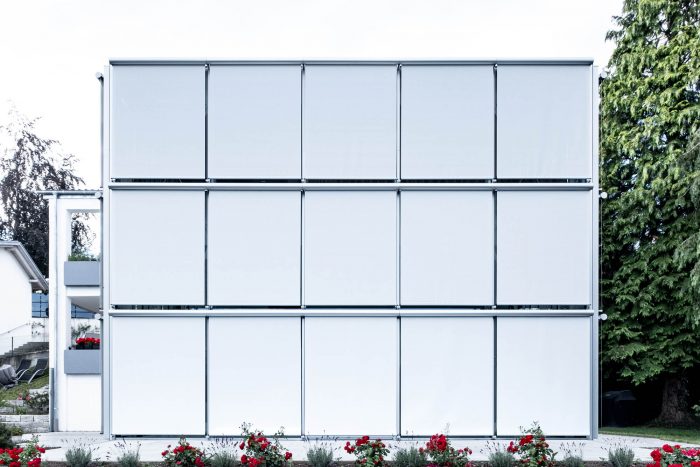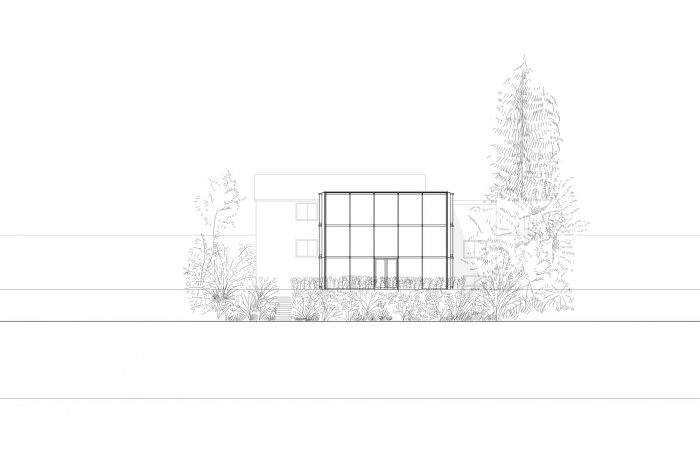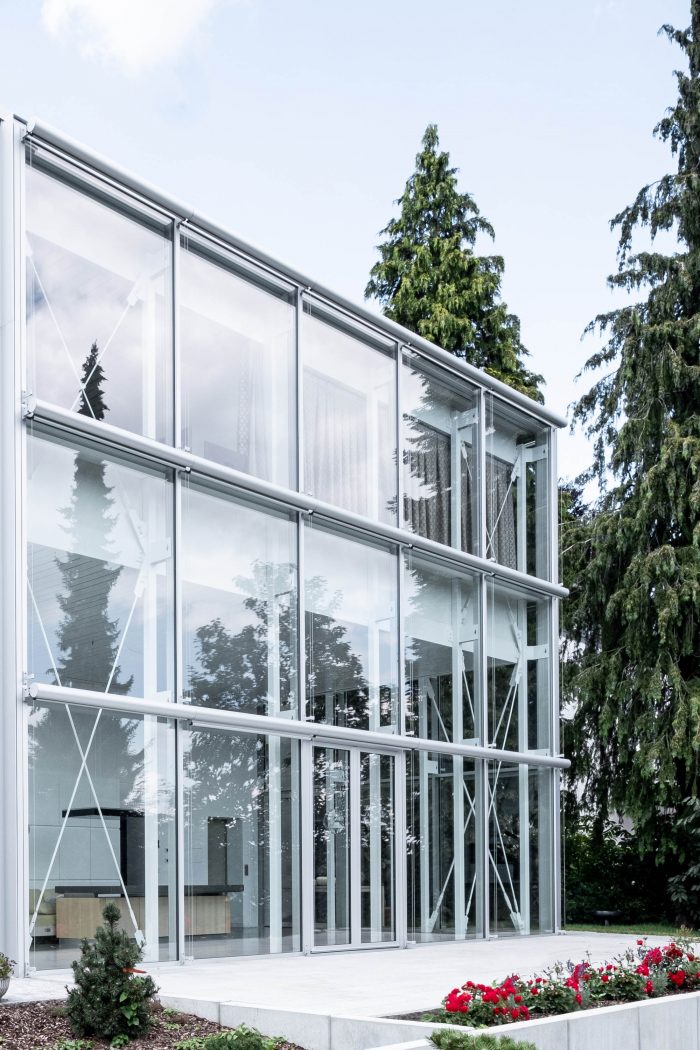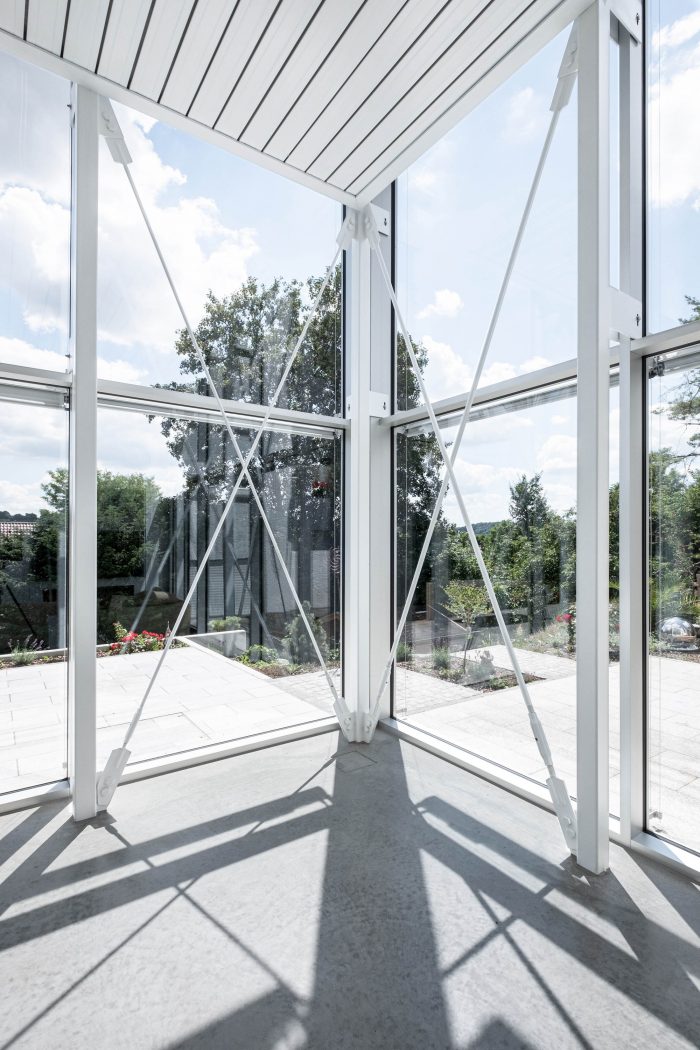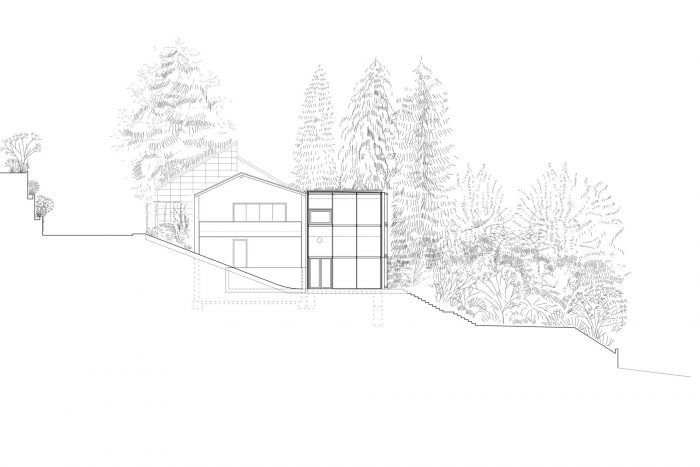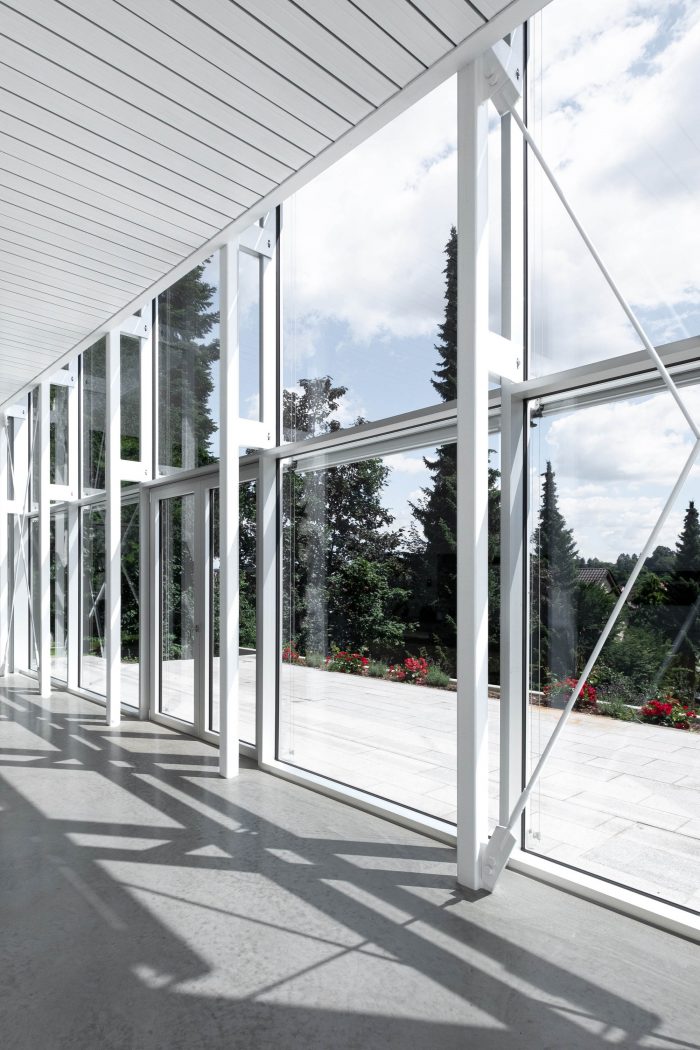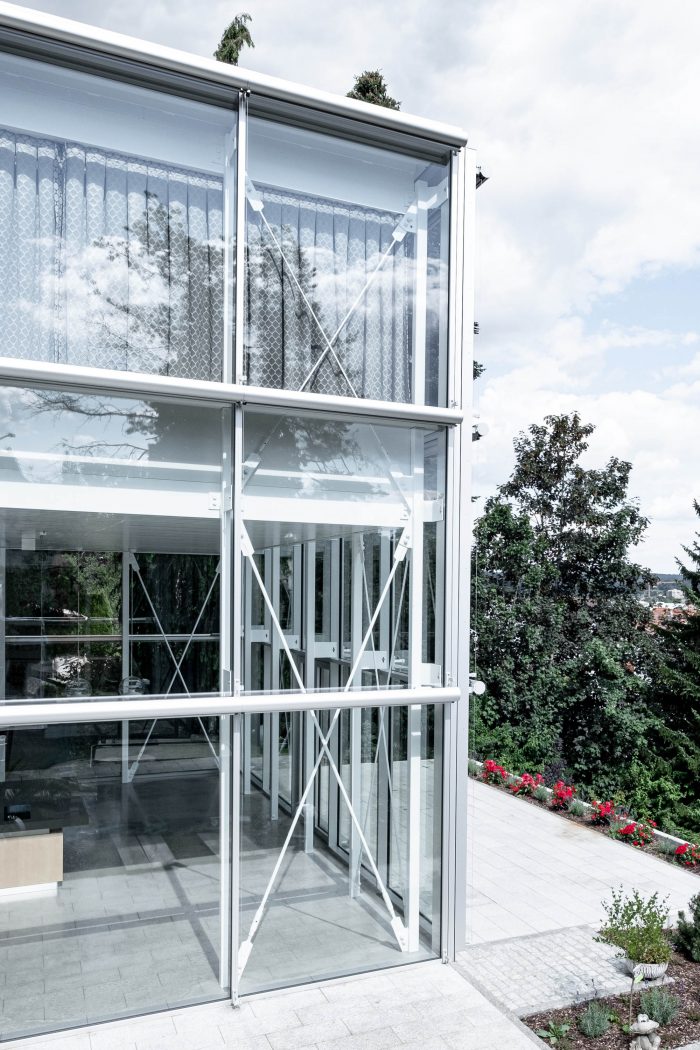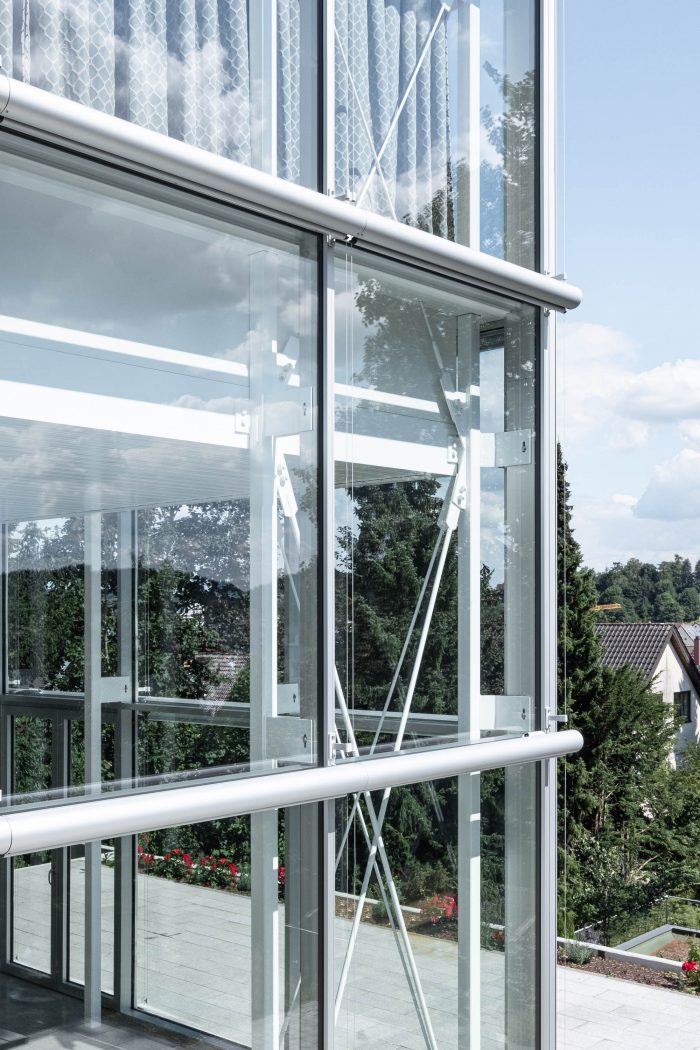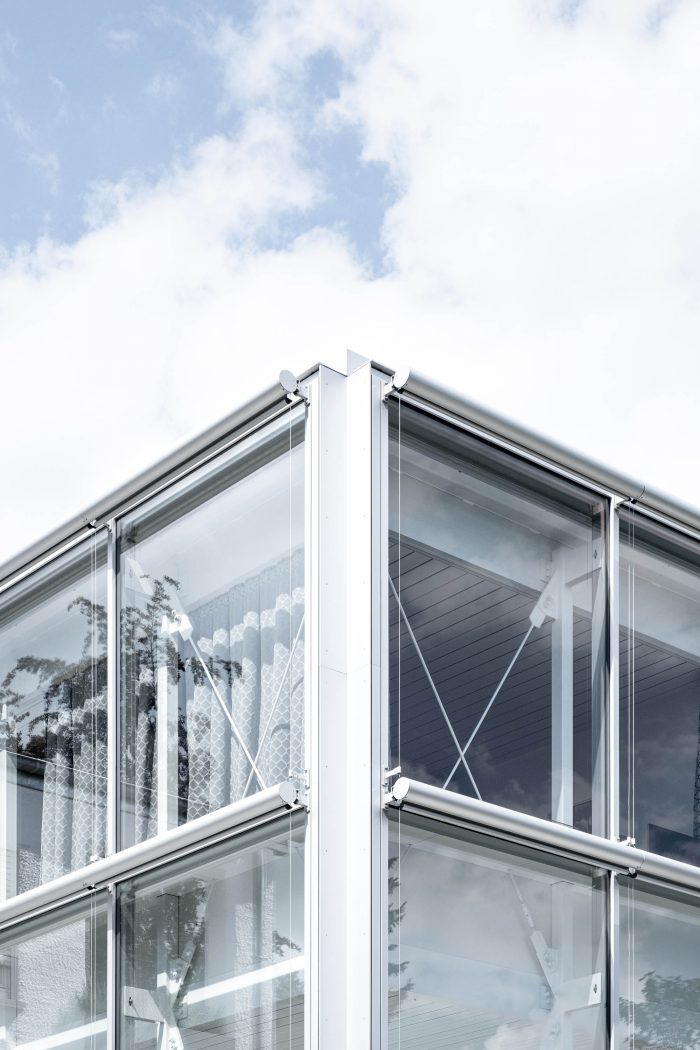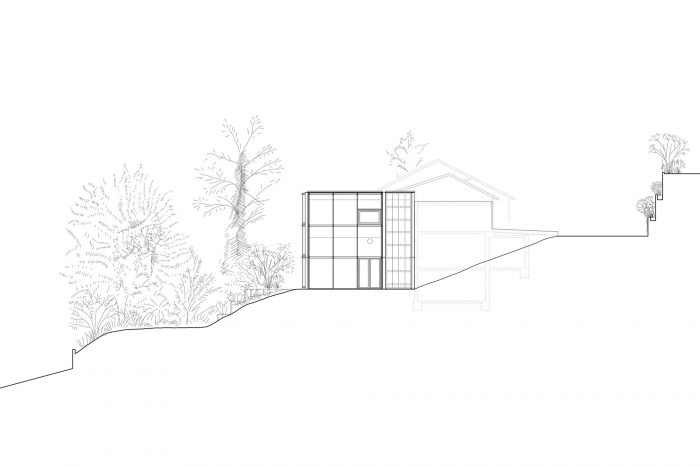施工任务是提高位于Biberach an der Riß中心位置的一户住宅的高度。现有的70年代的建筑矗立在一个朝南的陡峭斜坡上,从北到南,地块在30米的距离内下降了10米。从北到南,地块下降了10米,距离为30米。房子延伸到3个分割的楼层,它们之间没有直接的空间联系。与斜坡平行的楼梯是生活空间之间的屏障。与花园的连接也基本上没有被使用。
The construction task was to raise the height of a single-family dwelling in a central location in Biberach an der Riß. The existing building from the 70s stands on a steep south-facing slope. From north to south, the plot drops by ten meters over a distance of 30m. The house extended over 3 split-level floors, which had no direct spatial connection to each other. The staircase, which ran parallel to the slope, stood as a barrier between the living spaces. Connections to the garden also remained largely unused.
竣工分析清楚地表明,建筑结构在结构上和空间上都不能证明增加高度的合理性,因此,现有结构的延续是不合理的。
The as-built analysis clearly showed that the building fabric neither structurally nor spatially justified an increase in height and thus the continuation of the existing structure.
因此,实现的设计去掉了被认为是空间障碍的楼梯,使生活空间相互开放,并在被部分拆除的实体建筑的基础上,在山谷一侧增加了一个东西向的用玻璃围合的钢结构骨架,使场地的实际质量变得有形且易于接近。流动的生活空间在略显杂乱的花园中间,与茂盛的植被交织在一起。
The realized design, therefore, removes the staircase, which was perceived as a spatial barrier, opens the living spaces to each other and adds to the solid building, which was partially demolished, on the valley side a steel skeleton structure enclosed in glass in an east-south-west direction, which makes the actual quality of the site tangible and accessible: The flowing living space in the middle of the slightly overgrown garden interwoven with lush vegetation.
改造后的单户住宅成为由两个垂直错落、自给自足、无障碍的住宅单元组成的多户住宅,每个单元在地面上与现有场地相连。 一层与街道同层,包括食堂厨房、走廊、客用卫生间、卧室、书房和卫生间。
The converted single-family residence becomes a multi-family dwelling consisting of two vertically stagged, self-sufficient, and accessible residential units, each connecting to the existing site at ground level. The first floor, which is the same level as the street, includes an eat-in kitchen, hallway, guest toilet, bedroom, study, and bathroom.
下层的生活单元在3个偏移的分层上延伸,有3个卧室、壁炉室、2个卫生间,在山谷边的花园层上新建了客厅和餐厅,现在入口层的壁炉室自己也向其开放。新的外部楼梯通向这个开放的空间结构,并提供了钢架建筑、绿色花园和罗特巴赫山谷的意外景观。
The lower living unit extends over 3 offset split-level floors with 3 bedrooms, fireplace room, 2 bathrooms, and the new living and dining room on the valley-side garden level, to which the fireplace room on the entrance level now opens itself. The new exterior staircase leads into this open space structure and provides an unexpected view of the steel frame building, the green garden, and the Rotbach Valley.
同样出乎意料的是,电梯从上坡车库开始,通往整体楼层,并在花园层结束。
Just as unexpectedly, the elevator begins in the uphill garage, leads overall floors, and ends on the garden level.
新建筑的形式完全来自于它的结构部件及其结构顺序。14根细长的钢柱(100x100mm)在1.95m的轴线网格上支撑着两层楼板,这些楼板被设计成跨度为6.50m的复合板。转角处的逐层抗风支撑依然可见。花丝铝柱梁立面包裹着钢结构,与住宅楼层的两层结构相映成趣,分为三个高度。
The new building derives its form solely from its structural components and their structural order. 14 slender steel columns (100x100mm) on a 1.95m axial grid support the two-floor slabs, which are designed as composite slabs with a 6.50m span. The floor-by-floor wind bracing in the corner bays remains visible. A filigree aluminum post-and-beam façade wraps around the steel structure and plays with the two-story structure of the residential floors, which are divided into three heights.
纺织遮阳帘形成了第二层,像面纱一样保护玻璃建筑围护结构在夏天不至于过热,同时又能看到花园的景色。在需要的时候,窗帘可以创造隐私。
The textile sunshade forms a second level that protects the glass building envelope from overheating in the summer like a veil, while at the same time allowing a view of the garden. Curtains create privacy when needed.
支撑结构、外立面、遮阳帘、私密性屏风等不同的组成部分,形成了一个织物状的、空间纵深的、历时性的结构,它随着一年四季、一天的时间、使用形式和光线的心情而变化。
The various components of the supporting structure, facade, sunshade, and privacy screen create a fabric-like, spatially deep, ephemeral structure that changes depending on the time of year and day, the form of use, and the mood of the light.
建筑师:Aretz Dürr Architektur
面积 : 120 m²
年份:2020年
照片:Luca Claussen Fotografie
首席建筑师:Sven Aretz, Jakob Dürr
城市 : 比伯拉赫
国家:德国
Architects: Aretz Dürr Architektur
Area: 120 m²
Year: 2020
Photographs: Luca Claussen Fotografie
Lead Architects :Sven Aretz, Jakob Dürr
City:Biberach
Country:Germany

